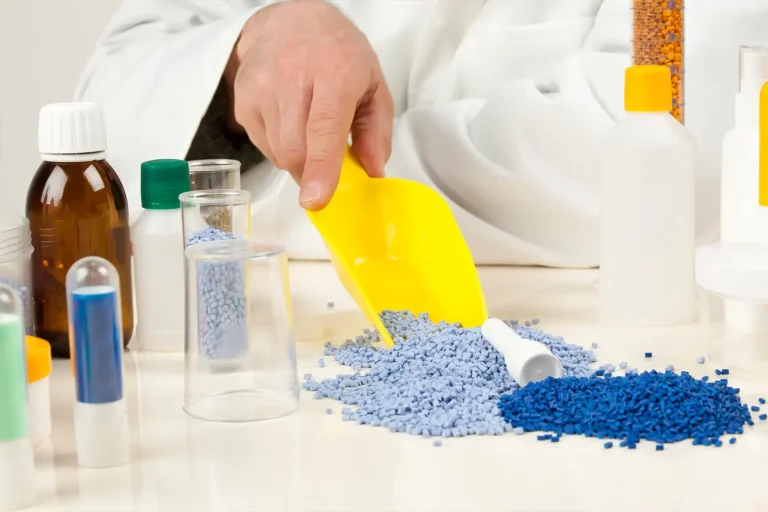Polyketone (POK) stands as one of the most revolutionary specialty engineering plastics of the 21st century, sparking transformative changes in materials science worldwide. First developed by South Korea’s Hyosung Group, this high-performance polymer has rapidly gained prominence across industries such as automotive manufacturing, electronics, medical devices, and packaging due to its exceptional comprehensive properties and eco-friendly production process.
This article provides a comprehensive analysis of POK material, covering its classification, unique characteristics, competitive advantages, and diverse applications. It reveals how this “super plastic” overcomes the limitations of traditional materials, offering innovative solutions for modern industrial development. With wear resistance 14 times higher than POM and a carbon monoxide-consuming production process, POK is redefining the possibilities of engineering plastics and emerging as one of the most influential material innovations since nylon.
Classification and Development of POK Material
Polyketone (POK) occupies a unique position in materials science as a revolutionary engineering plastic. In terms of plastic classification, POK falls under the category of high-performance engineering plastics, with performance metrics lying between standard engineering plastics and specialty engineering plastics.
Plastics are typically categorized by their operating temperature:
- General-purpose plastics (<100°C)
- Engineering plastics (<150°C)
- Specialty engineering plastics (long-term use temperature >150°C)
POK has a long-term service temperature of 120°C, and with modifications, its heat deflection temperature (HDT) can reach 200–215°C, outperforming many conventional engineering plastics in high-temperature applications.
POK is synthesized from carbon monoxide (CO), ethylene, and propylene, making it a novel green polymer. Its development traces back to a decade of dedicated research by South Korea’s Hyosung Group. From 2004 to 2013, Hyosung invested 500 billion KRW (~$450 million) annually in POK R&D, ultimately achieving commercial production and securing 160 patents (133 domestic, 27 international). Notably, POK is regarded as the most revolutionary material since nylon’s invention in 1938—a testament to its significance in the history of plastics.
Environmental Advantages of POK Production
POK stands out for its sustainability benefits:
- Producing 50,000 tons of POK consumes 25,000 tons of CO, equivalent to the carbon absorption of 3.8 million pine trees over five years.
- Unlike traditional plastics, POK production reduces carbon emissions, aligning with global decarbonization efforts.
Global Production Landscape
The POK market is highly concentrated, with major producers including:
- Hyosung (South Korea, dominant producer, 10,000–20,000 tons/year capacity)
- BASF (Germany)
- Solvay (Belgium)
China, while a major consumer, still relies on imports due to technological barriers. Demand is growing fastest in China, the U.S., and Europe, driven by automotive and electronics industries.
Molecular Structure & Crystallinity
POK has a highly ordered crystalline polymer structure, existing in two forms:
- α-crystal: Parameters A=6.91, B=5.12, C=7.60; density = 1.382 g/cm³
- β-crystal: Parameters A=7.97, B=4.76, C=7.57; density = 1.297 g/cm³
This unique structure underpins POK’s outstanding physical and chemical properties.
Table: Key Properties of POK Material
| Property | Value | Comparison Benchmark |
|---|---|---|
| Long-term use temperature | 120°C (modified: 215°C) | Higher than most engineering plastics |
| Wear resistance | 14× better than POM | Best among engineering plastics |
| Impact strength | 2.3× better than PBT | Far exceeds traditional materials |
| Barrier properties | Comparable to EVOH | Highest grade in plastics |
| Hydrolysis resistance | 1.3× better than PPO | Excellent in wet environments |
Market Outlook
POK is in a rapid growth phase, with expanding applications and ongoing material enhancements. However, challenges remain:
- Limited production capacity
- High cost
- Technology monopolies
These factors present opportunities for innovation and market expansion.
Outstanding Properties of POK
POK’s revolutionary status stems from its superior performance in four key areas:
- Super wear resistance (14× better than POM)
- Super chemical resistance (comparable to PPS)
- Super toughness (2.3× better than PBT)
- Super barrier properties (matches EVOH)
1. Wear Resistance
- Lowest wear rate among engineering plastics.
- Maintains dimensional stability under high friction.
- Used in gears, bearings, and sliding parts for extended lifespan.
2. Chemical Resistance
- Resists fuels, oils, solvents, and acids/alkalis.
- 3000-hour diesel immersion test shows minimal property changes.
- Ideal for chemical processing equipment and fuel systems.
3. Mechanical Strength & Impact Resistance
- 230% higher impact strength than nylon (PA66).
- Maintains toughness even at -40°C.
- High stiffness and tensile strength for structural applications.
4. Barrier Properties
- Blocks moisture, oxygen, and hydrocarbons effectively.
- Used in food packaging, medical containers, and fuel tanks.
5. Thermal Performance
- Long-term use at 120°C (modified grades up to 215°C).
- Low-temperature flexibility (-40°C).
6. Safety & Sustainability
- FDA, KTW, NSF, and USP Class VI certified (food/medical safe).
- Low VOC emissions (passes strict odor tests).
Table: POK vs. Common Engineering Plastics
| Property | POK | PA66 (Nylon) | POM | PBT | PPO |
|---|---|---|---|---|---|
| Wear resistance | ★★★★★ (14× POM) | ★★★ | ★★★★ | ★★★ | ★★ |
| Chemical resistance | ★★★★★ (near PPS) | ★★★ | ★★★ | ★★★ | ★★★★ |
| Impact strength | ★★★★★ (2.3× PBT) | ★★★ | ★★ | ★★★ | ★★★ |
| Barrier properties | ★★★★★ (like EVOH) | ★★ | ★★ | ★★★ | ★★★ |
| Hydrolysis resistance | ★★★★★ (1.3× PPO) | ★★ | ★★★ | ★★★ | ★★★★ |
| Max. use temperature | 120°C (modified: 215°C) | 120°C | 100°C | 110°C | 120°C |
Key Advantages of POK
1. Balanced Performance
- Combines high strength, toughness, and wear resistance—traditionally a trade-off in materials.
2. Environmental Benefits
- CO-consuming production (reduces greenhouse gases).
- Recyclable and low-toxicity.
3. Processing Flexibility
- Compatible with injection molding, extrusion, and blow molding.
4. Cost-Effectiveness
- Longer lifespan reduces replacement frequency.
- Lower maintenance costs than metals or traditional plastics.
5. Modification Potential
- Glass fiber reinforcement (GF40): Increases strength and heat resistance.
- Blends with PP, rubber, or carbon fiber for specialized uses.
Applications of POK
1. Automotive (40% of POK use)
- Fuel systems: Pipes, filler necks, tanks (superior fuel resistance).
- Engine components: Covers, coolant tanks (heat resistance).
2. Electronics & Electrical
- Connectors, housings, insulating parts.
3. Medical & Food Packaging
- FDA-approved for medical devices and food containers.
4. Industrial Machinery
- Wear-resistant gears, bearings, and seals.
5. Consumer Goods
- Durable household items, sports equipment.
Future Prospects
- Expanding into 3D printing, robotics, and aerospace.
- Potential to replace metals in lightweight designs.
Conclusion
POK represents a paradigm shift in engineering plastics, offering unmatched wear resistance, chemical stability, and environmental benefits. As industries demand higher performance and sustainability, POK is poised to become a dominant material in automotive, medical, and industrial applications.
With ongoing advancements in modification techniques and production scaling, POK’s market presence is set to grow exponentially, solidifying its role as the next-generation super plastic.



